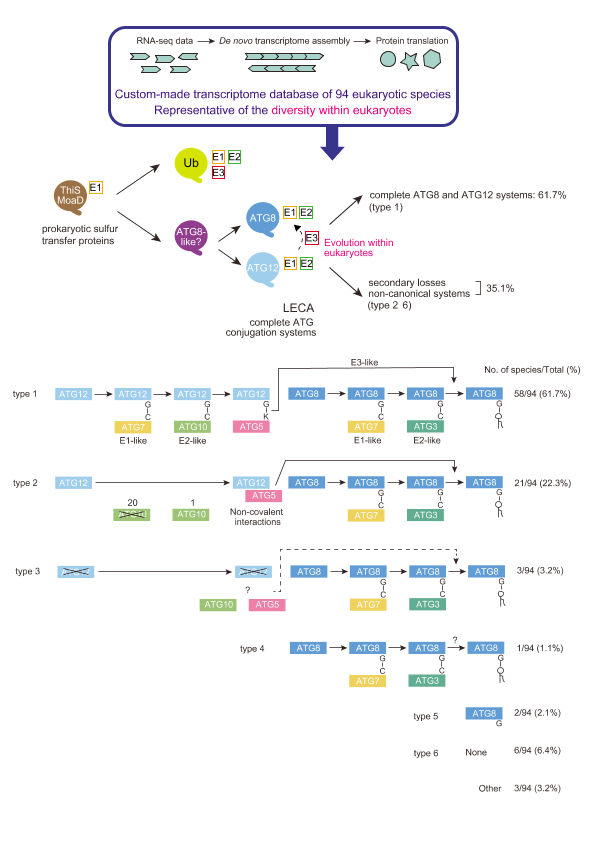Recent Publications (Original)
Evolutionary diversification of the autophagy-related ubiquitin-like conjugation systems (Zhang et al., Autophagy)
2022.04.20 Recent Publications (Original)
Sidi Zhang,Euki Yazaki,Hirokazu Sakamoto,Hayashi Yamamoto &Noboru Mizushima
Evolutionary diversification of the autophagy-related ubiquitin-like conjugation systems
Autophagy 2022 Apr 15;1-16. doi: 10.1080/15548627.2022.2059168.
Two autophagy-related (ATG) ubiquitin-like conjugation systems, the ATG12 and ATG8 systems, play important roles in macroautophagy. While multiple duplications and losses of the ATG conjugation system proteins are found in different lineages, the extent to which the underlying systems diversified across eukaryotes is not fully understood. Here, in order to understand the evolution of the ATG conjugation systems, we constructed a transcriptome database consisting of 94 eukaryotic species covering major eukaryotic clades and systematically identified ATG conjugation system components. Both ATG10 and the C-terminal glycine of ATG12 are essential for the canonical ubiquitin-like conjugation of ATG12 and ATG5. However, loss of ATG10 or the C-terminal glycine of ATG12 occurred at least 16 times in a wide range of lineages, suggesting that possible covalent-to-non-covalent transition is not limited to the species that we previously reported such as Alveolata and some yeast species. Some species have only the ATG8 system (with conjugation enzymes) or only ATG8 (without conjugation enzymes). More than 10 species have ATG8 homologs without the conserved C-terminal glycine, and Tetrahymena has an ATG8 homolog with a predicted transmembrane domain, which may be able to anchor to the membrane independent of the ATG conjugation systems. We discuss the possibility that the ancestor of the ATG12 and ATG8 systems is more similar to ATG8. Overall, our study offers a whole picture of the evolution and diversity of the ATG conjugation systems among eukaryotes, and provides evidence that functional diversifications of the systems are more common than previously thought.


